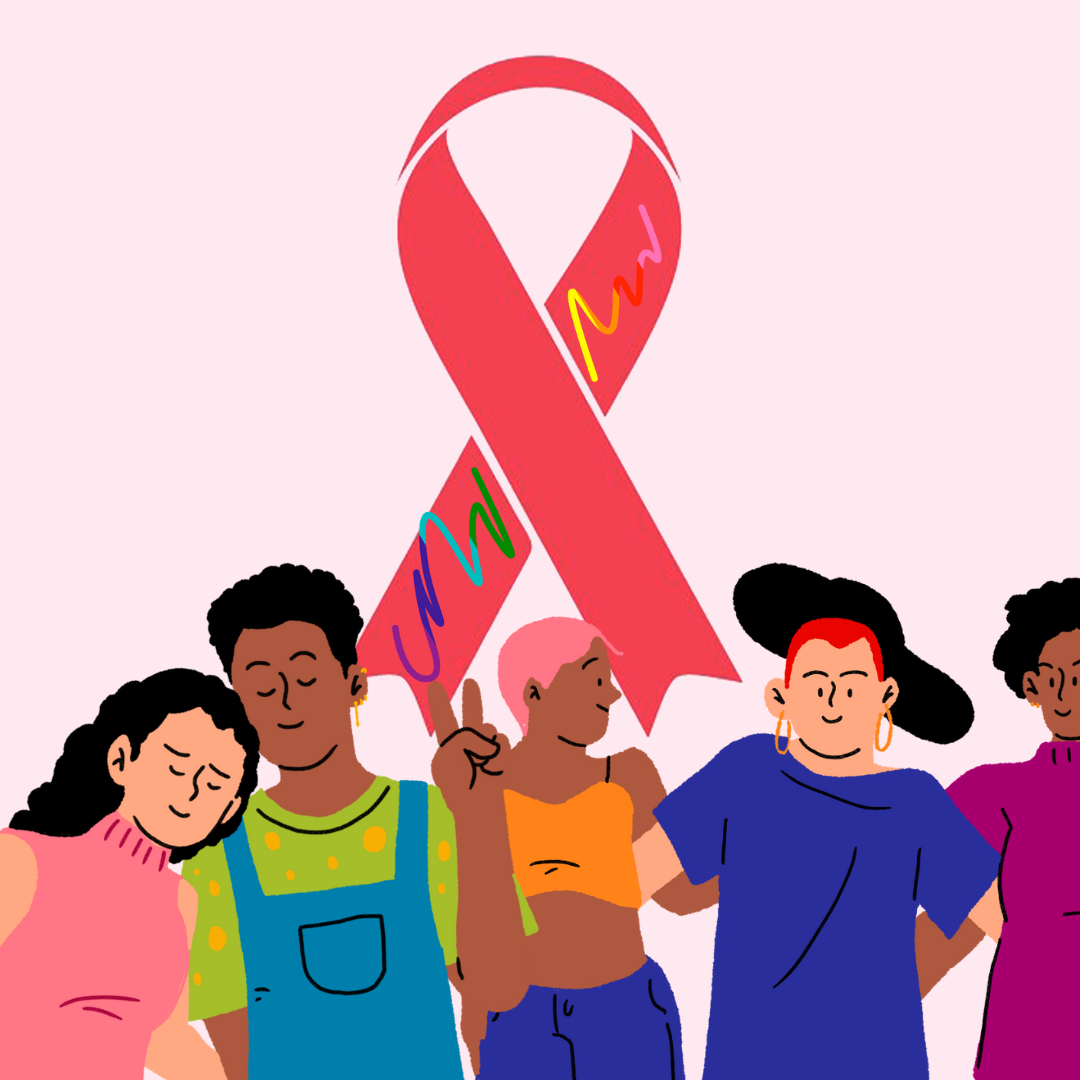Graphic by Christopher Ikonomou (Xe/He)
In 1981, the first cases of what would later be known as Acquired Immunodeficiency Syndrome (AIDS) were reported in America. In hindsight, there had been deaths that would later be attributed to AIDS as early as the 1970s, but the disease was not named until 1982. AIDS is caused by the Human Immunodeficiency Virus (HIV), a virus which attacks the immune system, weakening it and later progressing to AIDS if left untreated; at that stage, the immune system is extremely weakened and the person who has been infected is affected more severely by diseases than unaffected people would be. However, not all HIV cases lead to AIDS. With early diagnosis and treatment, the disease can be slowed and damage to the body lessened, leading to greatly reduced rate of death and better quality of life. With the most advanced treatments, someone with HIV can now become undetectable and untransmittable.
The earliest recorded case of HIV occurred in 1959 in what is now known as the Democratic Republic of the Congo. It was suspected that the disease was passed from blood-to-blood contact with a chimpanzee during hunting; the man later died from AIDS. AIDS then swept through the African continent in the 1970s and 80s with devastating consequences. At one point in the late 1990s, 20.6% of the adults in Swaziland, a country in Southern Africa, had HIV. For the most part, infection with HIV was transmitted amongst heterosexual people in Africa, contrasted with its prevalence in gay men in the U.S.
Today, June 5th, is a day of recognition for the 37 million people that live with HIV today and aims to raise awareness for their needs, health issues, and journeys. According to HIV.gov, over half of these survivors live in Eastern and Southern Africa, and 6% live in Western and Central Europe and North America. According to the Human Rights Campaign in 2013, gay men represented 55% of the people living with HIV despite only representing 2% of the overall population, and the number was even higher for Black and Latino gay men.
June 5th was chosen for HIV Long-Term Survivors Awareness Day because on this day in 1981, the first AIDS cases were reported in five young gay men by the CDC. Before AIDS got its name, it was termed Gay-Related Immune Deficiency (GRID) in America and was nicknamed “gay cancer.” The Reagan administration in the U.S. and other government administrations in Western Europe generally ignored the crisis entirely. In fact, President Reagan was completely silent until 1985 when he said the word “AIDS” for the first time after being asked about it in an interview; he called handling it a “top priority.” In 1985 alone, over 16,000 cases of AIDS had been reported and eight thousand people had died.
Research was also grossly underfunded for the first four years of the epidemic in America — the Reagan administration cut funding to the CDC and the National Institutes of Health in 1983.
The stigma around being gay prevented many in America from seeking help — by doing so, they could be outing themselves, and even if they did muster the courage to pursue medical treatment, AIDS patients were not always treated with the most care, often outright neglected even by healthcare professionals because of the fear surrounding the disease and misinformation about how it was spread. This stigma was largely fueled and simultaneously reinforced by homophobic attitudes — people didn’t want to provide treatment to LGBTQ+ people in the first place, and the fear of contracting AIDS only cemented this belief.
Now, there is more information available about HIV/AIDS — a routine Google search comes with the information that you cannot contract HIV from casual contact with someone who is positive and that HIV/AIDS does not only affect gay men. However, that still doesn’t erase the stigma that was so prevalent in the 1980s and the lives that that stigma took. Moreover, men who have sex with men are still routinely turned away at blood banks if they have had sexual contact with another man in the past three months, even if they are in a monogamous relationship, despite the fact that blood donations are screened for HIV.
Although HIV is not curable (yet), it doesn’t have to be deadly. Millions of people live with HIV to this day, and early diagnosis is the key to stopping the progression and spread of HIV. Information on testing and treatment can be found on the CDC website, and HIV testing locations can be found here.
Credits:
Author: Emma Blakely (They/She/He)
Artist: Christopher Ikonomou (Xe/He)
Copy Editor: Bella (She/They)

